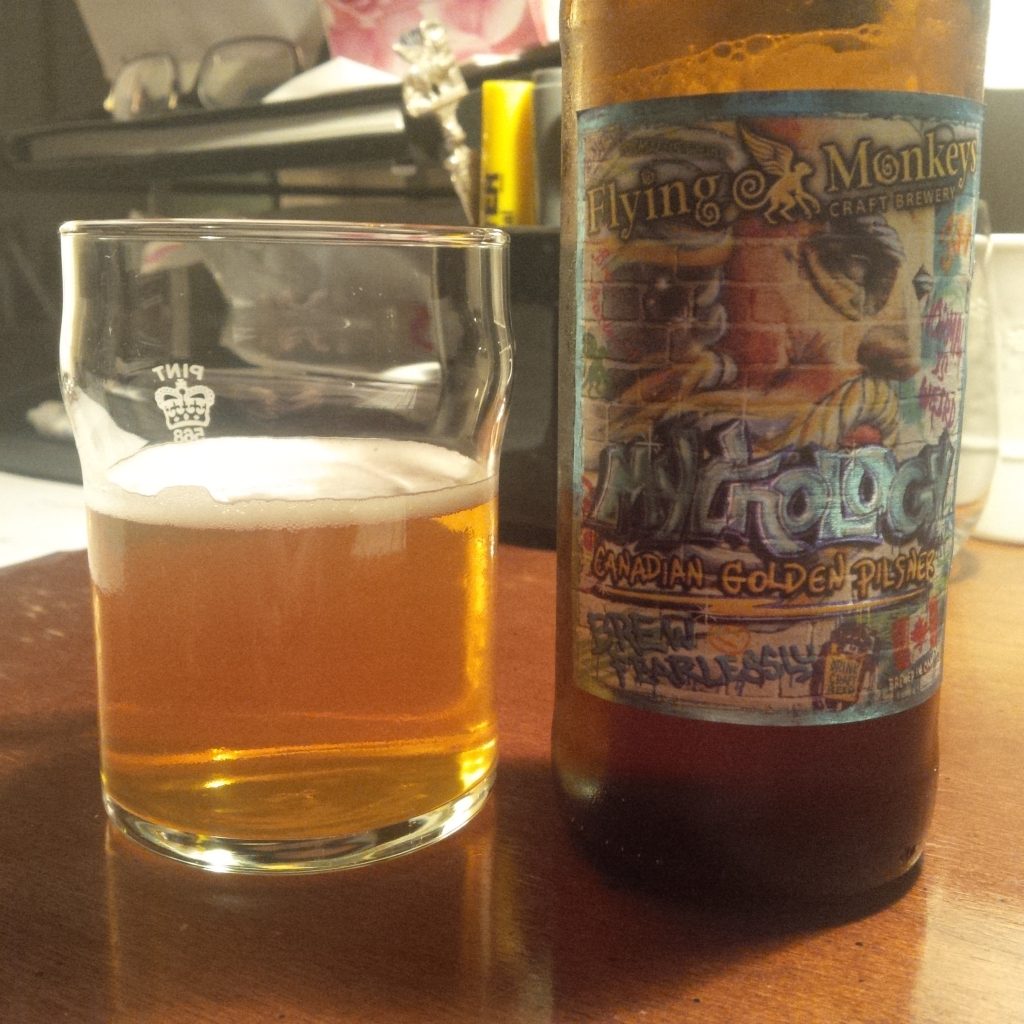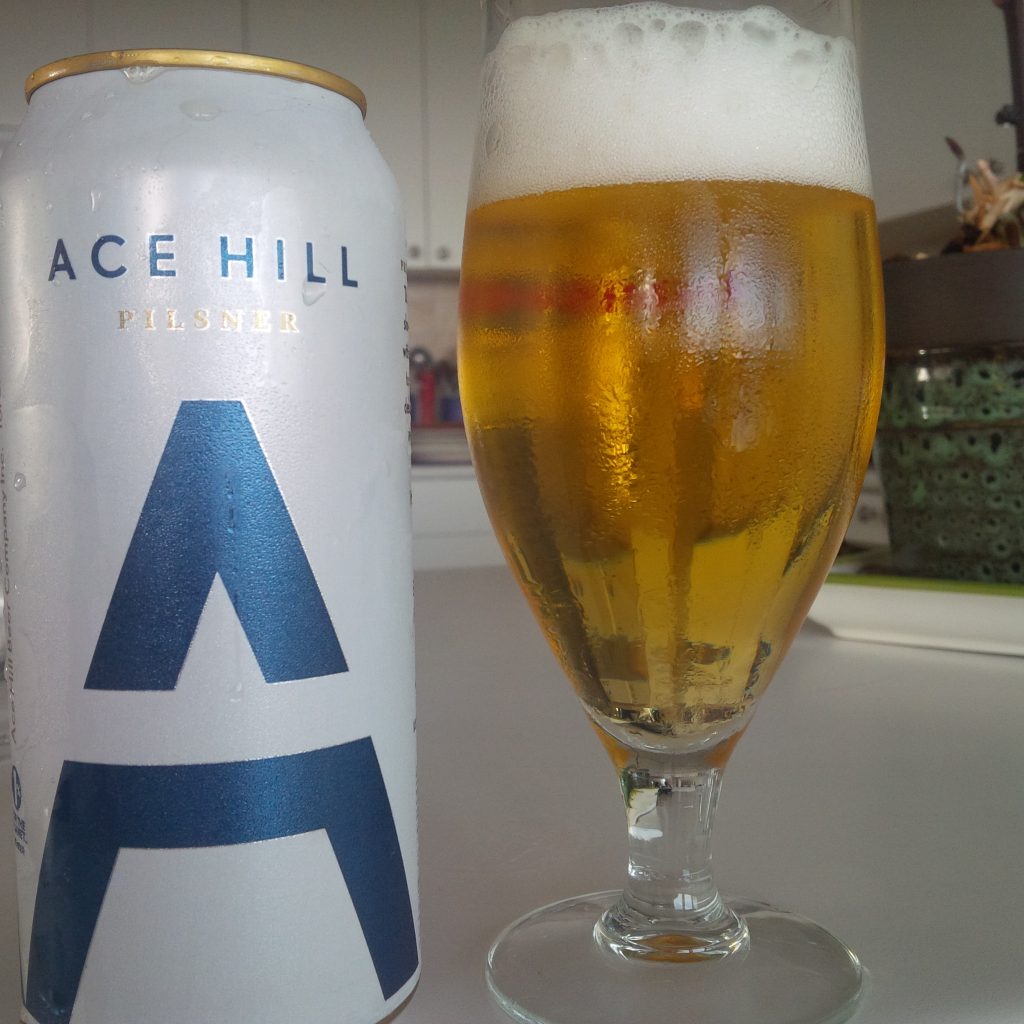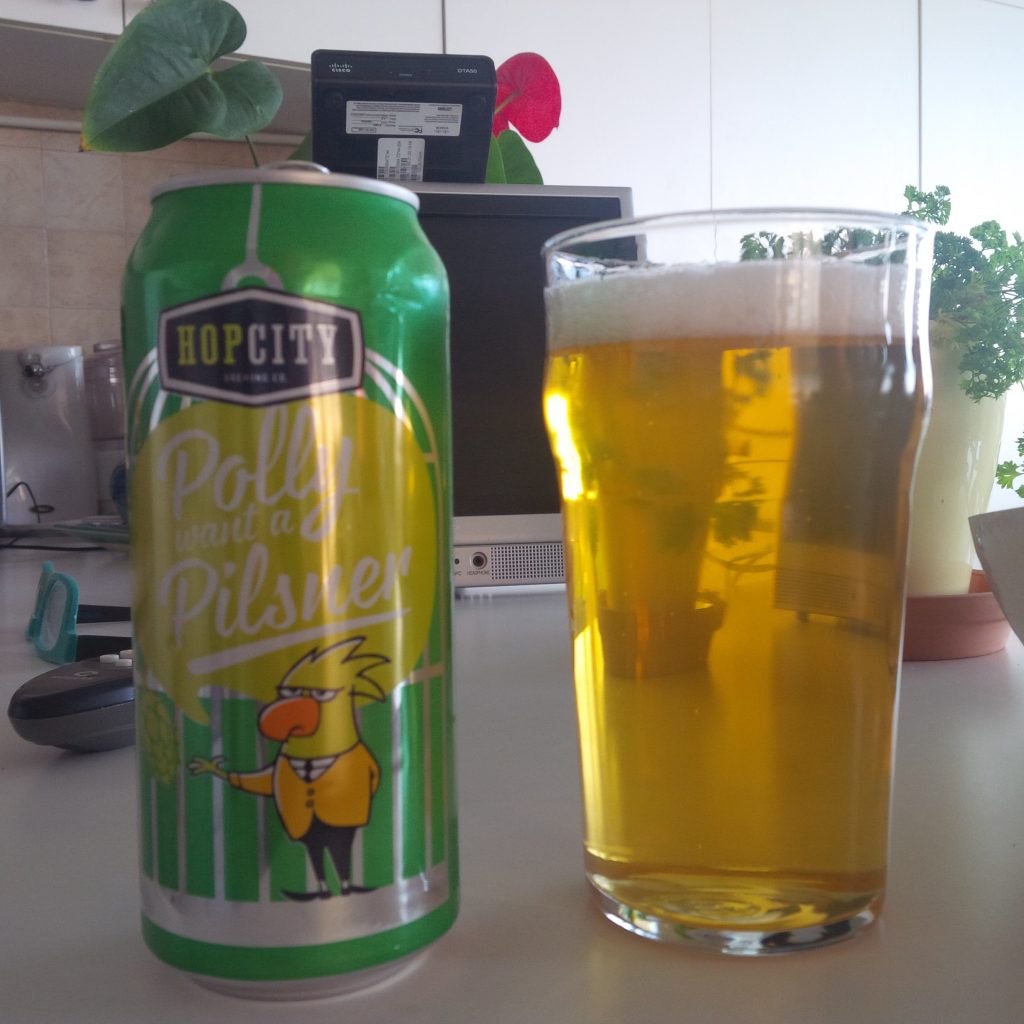I’ve always enjoyed good lager. Properly made it is unquestionably one of the great styles and deserves its world fame.
Unfortunately, the mass market in recent decades has turned largely to thin starchy beers, i.e., with high adjunct, low hops, and low attenuations – c. 1008 I’m told. I’m sure this pleases many, while leaving fans of a more traditional palate looking for something else.
But there are still many good beers, both within the mass market and certainly the craft field. Also, sometimes a particular recipe just pleases, it may be down to the yeast used, a particular hop or malt, or some other indefinable attribute of brewing. In this sense, brewing is still an art and can’t be reduced to formulas objectively deciphered.
This beer is made in a small brewery in Etobicoke in the GTA, its main line is not craft-oriented but it makes a lot of beer under contract, which is.
If you get it very fresh, Cool Lager, draft or bottle, is an excellent beer in the traditional Canadian style. It’s got decent malt and hop notes with a snappy finish. I like it after long walks or bike rides. The glass shown was ordered in a small bar out on Danforth quite a bit east, I had been on foot for a few hours and happened to stop there. Excellent choice for those who like the established Canadian lager profile.
Ace Hill Pilsner
This beer is very German in taste. I had very similar beers in Germany a few years ago. It’s got a mineral note from the Noble hops and a dryish malt characteristic. The yeast too is obviously European and is said to derive from Augustiner (see the company’s website). I drink this half-chilled as this brings out its best qualities.
I like it too because there is no sulphide flavour, the yeast is German but does not have the over-boiled egg taste so many European lagers have. (This is sometimes called hay-like or grassy in reviews, even skunky where the taste is misconstrued for damage by light). It’s a beer that goes well with food.
This tastes different to me at different times. Sometimes I get DMS in it, sometimes not. This one didn’t have any, so yay. It’s a little sweet with the adjunct in place but not obtrusive. Like Cool it’s well-made and while many other beers use similar materials, they just don’t taste as good. As I’ve often said, equal flavour intensities don’t mean the sensory qualities are equal. Something medium in palate impact can taste great, or not, same thing for something with high palate impact or mild impact.
 Flying Monkeys Mythology Canadian Golden Pilsner
Flying Monkeys Mythology Canadian Golden Pilsner
This is good, lightly sweet, light honey-gold in hue, firm hopping which the label indicates is Noble hops. There is a citric note though that seems North American. I wonder if the hop bill includes an American hop, or maybe an American variety grown in Germany. But it’s everything a craft lager should be while not tasting like any others out there.
This is a newish release from Hop City, the craft brewing arm of Moosehead. It’s got a firm grainy taste, on the dry side but with plenty of flavour and traditional lager hopping (cutting but neutral, what I call mineral in these notes). I feel I can taste wheat in the finish though and it’s not a taste that recommends itself to me. Wheat is an ingredient according to the label and I tend to puzzle over this as traditional lager – by which I mean blonde lager in its inception in Bavaria and Bohemia – was all-barley malt. I don’t think the wheat is needed, myself, and prefer the profile of all-malt beer.
Beck’s Beer
I didn’t include an image because everyone knows what Beck’s looks like. Body light but gains from all-malt, hops are surprisingly strong and well-interleaved in the taste. That German minerality again. But the aftertaste goes awry IMO, a cooked or veg note (not DMS). Perhaps it’s the pasteurization as I notice a similar effect in other imports.





Hey Gary, I just found your blog through a link from Chuck Cowdery’s. Not sure how I’d never run across it before, and your posts are very interesting to me personally. I’ll certainly be commenting more as I explore past posts.
As a lifetime lager lover I appreciate anyone who doesn’t instinctively dismiss them as unworthy of attention. This summer I’m enjoying Victory Helles, Brooklyn Pilsner, and the amazing pilsner from my local brewpub, Otto’s in State College, PA.
You note Beck’s as an import in this post. Is it still imported into Canada? If so, lucky you! Ours is now a poser made here by A-B. Bummer.
Thanks for the thoughtful blog. In an era where people seem to have less time to devote to writing them, instead adding yet more drivel to the Facebook or Twitter stream, you’re doing yeoman’s work!
Thanks Sam, very nice to hear from you and I’ve always enjoyed your own writing! Do take a look at past posts and the ones on whiskey, starting in early June, may appeal in particular. Especially the string which discusses how natural fermentation was a hallmark of sour mash small tub production in the 1800s. The ones on Robertson County whiskey of Tennessee may interest as well, and on Jack Daniel.
Gary
“which reduces one of its qualities: malt richness”
Hence why I like the Munich stuff. I love the Oktoberfest beers, although some are a bit sniffy about them.
No idea whether British Estrella Damm is the same as what you get in Spain, although it is imported. I know British licence-brewed San Miguel isn’t a patch on the Spanish version, and is also weaker.
The weak “cold-filtered” version of Heineken has long since disappeared – everything we get now is the genuine 5% ABV Dutch import, which IMV is one of the best widely-available lagers.
Thanks and good to know the U.K. gets the regular Heineken now.
Gary
I guess I am someone who doesn’t “get” lager, but I am learning bit by bit. I will work my way down your list and see where I end up. A pub in my neighborhood serves Cool Beer. I will start there.
Thanks Gary. Cool is good as a first beer after a long day or after golf. For gourmet-level lager, Side Launch’s Mountain Lager, not mentioned above, available at the Pilot regularly, is just about the best anywhere.
One of the problems with modern lager is it tends to be drier than in the 1800s (attenuated lower in the ferment), which reduces one of its qualities: malt richness. But it is still worth drinking and at its best the equal of the best ales.
A lot of beer geeks fail to “get” lager, as by definition a good lager is to some extent subtle and not in-your-face. Also, being honest, most of the really dull, forgettable beer in the world is some form of pale lager.
I’d say my favourite is the Munich Helles style – I like the malt accent and touch of sweetness.
A few British eyebrows might be raised at your inclusion of Estrella Damm, although it is often regarded as the best of the popular Spanish lagers.
Thanks for this. I find the Estrella Damm very good when fresh, similar to the Barcelona draft.
Is the one in England same strength and origin as the latter, it’s not like Heineken is it?
Gary
Point taken, Curmudgeon, but lagers also encompass more than the lighter styles: maibock, doppelbock, vienna; there are a lot of more challenging styles within the category.